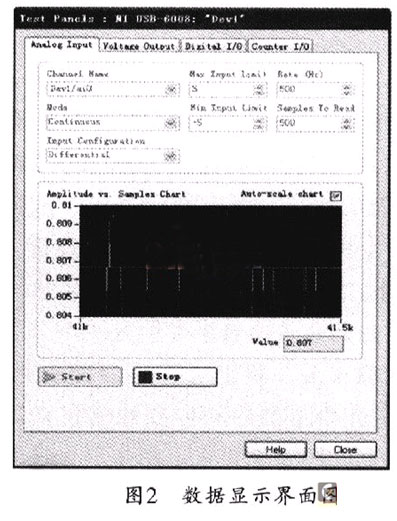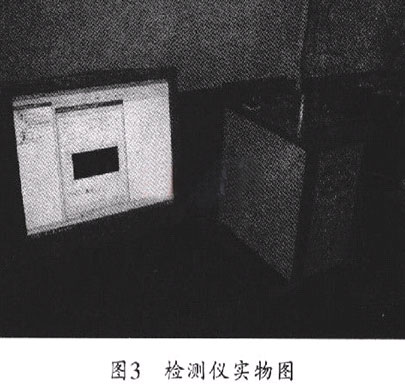1 Existing testing instruments
This article refers to the address: http://
In the past two years, some foreign technology companies have successively developed related detection instruments for rapid detection of microorganisms in food and milk products, and established agents in China. It is representative of the Pi-102 food bacteria rapid tester produced by Hygiena of the United States. The food bacteria rapid analyzer mainly uses ATP bioluminescence method, combined with high-sensitivity photomultiplier tube and special reagent, can be used for food within 10 minutes. The total number of microorganisms contained in the sample (pre-treatment) is quickly estimated, and the test result data is corresponding to the corresponding national standard, and the microbial condition in the food sample can be initially determined, such as whether the standard is exceeded. ATP is an abbreviation for adenosine triphosphate, which is an intracellular energizing molecule. The Pi-102 food bacteria rapid tester can obtain the light unit reading by detecting the luminescence reaction of ATP and luciferase in the sample, and the total number of ATP can be estimated by conversion, and then the total number of microorganisms in the sample can be further indirectly determined to be food hygiene. Supervised on-site testing provides a reference. The tester's sales price in China is RMB 79,000. However, because the ATP bioluminescence reaction is affected by various factors (temperature, acid and alkali, dilution concentration, etc.), the results are different from the CFU (colonvformine unit) obtained by conventional culture, so the test suggests that the user set a critical value. For reference.
Secondly, BactoCount IBC-M is a new semi-automatic milk bacteria counter from BENTLEY. The instrument is designed for small and medium laboratories. The quick test result is that it becomes a tool for the milk processing plant or the dairy laboratory, thus filling the gap in the rapid detection of microorganisms in the milk source. The detection procedure and principle of the instrument are firstly cultured (sample preparation), that is, a culture reagent consisting of a purification buffer, a hydrolyzed protease and a fluorescent labeling solution is added to the milk sample to dissolve the somatic cells in the milk sample, stabilize the fat globule and Protein, infiltrate bacteria and contaminate DNA. During the culture process, the fluorescent labeling solution can rapidly penetrate into the bacteria of all the double-layer nucleic acids. At the same time, the ultrasonic degrader can chemically degrade the interfering particles, disintegrate the remaining bacterial colonies and reduce the background fluorescence. The tester's sales price in China is RMB 720,000.
In addition, it is the BactoScan FC series of milk bacteria rapid analyzers from Foss. With this detection system, users can get raw milk in one minute.
The total number of bacteria provides fast and reliable data for pasture and dairy processing companies. With these fast and accurate information, the pasture can improve its hygiene and improve the quality of the products sold. In particular, the dairy processing plant can use its rapid advantage to effectively detect the raw materials entering the plant in real time, so as to block the raw milk of the unqualified bacterial index from the processing plant, thus avoiding losses to the processing enterprise. Reliable data provides a fair and comprehensive analysis of the quality of the pasture and dairy.
Currently, Flow Cytometry (the principle of cell counting, the counting and characterization of cells, bacteria or particles in flow) has been widely used in the biochemistry and medical sciences. The principle is to stain the cells/particles to be measured and place them in a suspension liquid, then force the cells/particles one by one through a very narrow gap/pipe. At the same time, a special light beam is emitted to each of them, so that each dyed cell/particle also emits a response beam pulse signal when passing through the measurement point, and then electronically records its pulse signal. The tester's sales price in China is 1.4 million yuan.
2 Information acquisition and amplification circuit design
In recent years, relevant experts in the fields of microbiology, biomedicine, physics and electronic information have conducted extensive and in-depth research on pesticide residues, harmful chemical components and harmful microorganisms in food, and published a large number of relevant Academic papers. Its representative microbiological bioelectrochemical method is Cai Haobin's article "Huaxia Medical" published in the article "Human Medicine" in 2000, and Lu Zhiyuan and other articles published in the Journal of Transducer Technology in 2005. "A bioelectrochemical method for the detection of microorganisms", but there is no report on the practical application of microbial detection in this area.
Based on the previous research, this paper conducted information sampling and data processing on the experimental data in the relevant literature, and designed and produced the microbial rapid detector. Table 1 lists the experimental data of the bacterial content of fresh milk and the sensor at 25 ° C given by Lu Zhiyuan et al.

It can be seen from Table 1 that the current and voltage of the sensor output are very weak, so that errors may occur in the analog-to-digital conversion and signal processing of the information. Therefore, an amplifying circuit with micro-current amplification as shown in Fig. 1 should be designed. The amplifier circuit uses an ICL7650 with high gain, high common-mode rejection ratio, low offset, and low drift as an operational amplifier , taking into account factors such as phase compensation, power supply fluctuations, and interference filtering. The amplifier has high input impedance and low output impedance with a closed loop magnification of 50. The signal output from the bio-battery box can be effectively amplified by the micro-current amplifier.


The detector can start data acquisition of the current value by clicking the Start button in the figure, and then through the function calculation in the program, directly obtain the corresponding number of bacteria in the milk. When the button Stop is clicked, the curve is still, and the corresponding current value and the number of bacteria are displayed as the instantaneous value when clicked. Figure 3 shows the physical map of the detector.

3 Conclusion
The bio-battery box and the micro-system detector formed by the software system can be used to simulate and process the curves obtained by multiple repeated measurements, thereby obtaining the final curve of the sensor output voltage and the bacterial content, and according to the curve. The data is written to obtain the corresponding data of the sensor output voltage and the bacterial content of the dairy product. The tester can then be used to determine the bacterial content of the aseptic bagged fresh milk to verify the effectiveness of the electrochemical biosensor. The detector's data detection error is five percent, so its related technology needs to be improved and improved. However, the detector has greatly improved the speed and efficiency of microbial detection. Moreover, the data of the detection output is straightforward, thereby changing the conventional method of manually counting bacteria or observing statistical counts by microscope.
The Neon Led Strip is the latest and most popular LED breakthrough product, it put Led flexible light strip inside the tube,Put the strips into the led tube to make the light soft. widely used in home decoration, shopping malls showcases, shelves and other auxiliary lighting. it replaces the traditional glass neon tube With the fiber, let the city shine.
Neon LED Strip,Magic Color LED Strip,LED Flexible Tube Lights,LED Neon Rope Light
SHEN ZHEN SEL LIGHTING CO.,LTD , https://www.sellighting.com